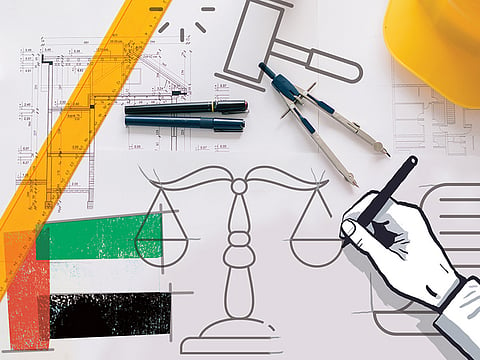The UAE needs a law to protect modern architecture
The past few years have been both a blessing and a scourge for modernist architecture in the UAE

It was a cool Thursday morning in 1971. Shaikh Rashid Bin Saeed Al Maktoum, Ruler of Dubai, was about to host one of the most important meetings of the 20th century in the Gulf. Following almost four years of intense negotiations between at first nine Gulf leaders, the time had finally come to sign the legal documents that would give birth to the youngest federation on the planet and the only one in the Arab world.
Everything was meticulously planned.
As a location Shaikh Rashid made sure to choose an iconic building that would not only reflect the modernity of Dubai but also be appropriate for the delicate nature of the meeting.
His choice fell on a modernist spherical single storey building by Jumeirah beach that had been constructed only recently. The circular shape of the building allowed for the installation of a rounded table that would set aside any potential complication arising from assigning the head of the table to one guest or another. It was utter genius on behalf of Shaikh Rashid who left nothing to chance. By noon on December 2, 1971 a four-coloured flag was hoisted outside the spherical modernist structure and the United Arab Emirates was born.
For decades after that historic Thursday morning the birthplace of the UAE federation continued to exist with little change. The fact that it survived the 1980s and 1990s period of rapid development is on its own cause for celebration.
By the late 2000s, the government of Dubai decided to redevelop the location and invited Canadian Moriyana & Teshima Architects to build an adjacent Etihad (Union) Museum which opened in 2017 to complement the modernist spherical structure and tell the story of the UAE’s formation.
However, the past few years have proven to be both a blessing and a scourge for modernist architecture in the UAE with ups and downs. The UAE Pavilion at the Venice Architectural Biennale in 2014 showcased to an international audience a number of modernist structures dating back to the 1970s and 1980s.
Sadly this recognition did not guarantee their preservation as one of the Técnica y Proyectos designed buildings of the popularly called Bank Street in Sharjah has already been demolished and others seem to be earmarked for demolition.
Also in 2014 a team of New York University Abu Dhabi students led by Professor Pascal Menoret produced the handy Abu Dhabi Guide: Modern Architecture, 1968-1992. In Dubai, the honey comb structure of the Dnata building was covered in reflective glass covering, an intricate design worthy of being highlighted (at least it wasn’t knocked down).
It is heartening to see UAE leaders working to preserve the early 20th century architecture in Shindagha, Al Fahidi Fort district in Dubai, the Heart of Sharjah, Al Jahili Fort in Al Ain and Qasr Al Hosn (aka the White Fort) in Abu Dhabi.
After all, these are buildings that they grew up in, and frequented and helped form their identities. But as their work is essential to preserve the UAE’s history it is also essential to preserve the modernist structures of the 1960s and 1970s for those born in the second half of the 20th century. After all, these are buildings that we grew up in, and frequented and helped form our identities.
Iconic structures
John Harris’ designed World Trade Centre is the “Fahidi Fort” of my generation in Dubai. The Técnica y Proyectos designed Bank Street buildings are the “Mahatta” of my generation in Sharjah.
The 1989 green bus station designed by Bulgarconsult’s Georgi Kolarovis is “White Fort” of my generation in Abu Dhabi. We grew up around them, we frequented them, they helped shape our sense of aesthetics and who we are.
And frankly it pains us to see them go. Already iconic structures across the UAE have been demolished including the Sharjah Cinema, and the Abu Dhabi Central Market designed by Egyptian architect Abdul Rahman Makhlouf and most recently the Sana Building in Bur Dubai.
It is therefore time for the UAE to enact a federal law that preserves modernist buildings, if not all of them: the ones that constitute landmarks. The UAE can learn from best practices of other states in this field and create an automatic national heritage listing for modernist structures.
For those individuals or corporations that own important modernist buildings the governments can potentially compensate them financially and reconstitute the building.
A good example are the current offices of the Sharjah Museums Authority which are housed in a preserved modernist building dating back to the 1960s that was constructed for a French oil company. The UAE must enact laws to preserve modernist architecture, after all, it was born inside one.
Sultan Al Qassemi is a UAE-based writer.
Sign up for the Daily Briefing
Get the latest news and updates straight to your inbox



